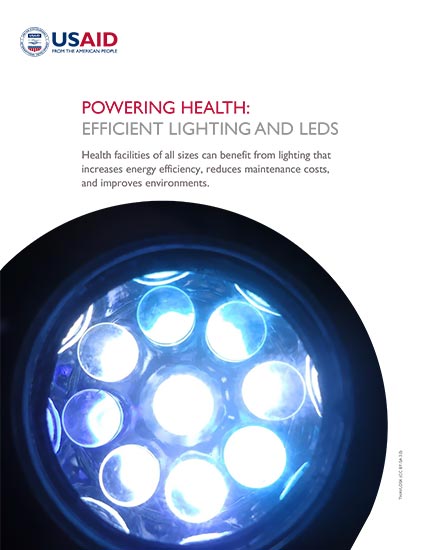Health facilities of all sizes can benefit from lighting that increases energy efficiency, reduces maintenance costs, and improves environments.
Light-emitting diodes (LEDs) have rapidly moved into the mainstream lighting market. Their availability and range of applications will continue to expand while their cost decreases. Long life and low energy consumption are the hallmarks of LED, but the quality of light, in terms of color temperature and color rendering, are also quite good and can be designed to meet specific lighting demands.
When assessing the applicability of lighting technologies, facility administrators should consider a number of parameters, including efficacy, correlated color temperature (CCT), and lifetime. Lighting technologies are commonly differentiated by their light source or lamp type, but a number of other components are needed to create efficient and aesthetic lighting. When specifying lighting systems (lamps, fixtures, ballasts, and controls), all components should be compatible. For example, fluorescent lamps will differ in their mounting base, size, and ballast compatibility, all of which affect the selection of fixtures and controls.
LEDs are fundamentally different from other, traditional lighting technologies such as incandescent and fluorescent. They are a solid-state lighting (SSL) technology, which means there are no gasses involved. Instead, there are diodes, which are semiconductor devices that produce photons—light—when current flows through them.
Health facilities range widely in size and services provided. Small clinics may provide only basic health services, requiring minimal electrical equipment and low lighting loads. By contrast, large medical facilities are among the most energy-intensive building types, providing specialty medical services, laboratories, and in-patient treatment. Health-care lighting is expected to meet the demands of these diverse environments and applications.
There are numerous advantages to using LED technology over traditional lighting in medical lighting applications, and their adoption for these purposes has been widespread. These advantages go well beyond energy efficiency. LEDs actually enhance the functionality of medical lighting. Traditional lighting technologies commonly used in medical applications include halogen, xenon, and fluorescent lamps. LEDs can be designed to provide superior color rendering abilities that rival those of halogen lights.
Product Selection
LEDs are bringing exciting advancements to the lighting and medical industries, but selecting them requires careful thought. When specifying lighting systems, the standards of particular relevance to LEDs are IES LM-79-19 (Photometric Measurement of LEDs), IES LM-80-20 (Measuring Luminous Flux and Color Maintenance of LED), and IES TM-21-11 and Addendum B (Projecting Long-Term Lumen Maintenance of LED Light Sources). A manufacturer’s warranty of at least three and preferably up to five years is also highly recommended.
Lighting Retrofit
Since alternative options are available for nearly every medical and general lighting application, it is important to understand the different factors that play a role in the financial viability of those alternatives. For example, the increase in initial cost, reduction in wattage, and extended life of LED products influence their competitiveness with traditional lighting technologies. The cost of electricity and lighting operational hours will also have an effect on any financial comparison of technologies.
Light levels and energy consumption are the two most important technical aspects of an efficient lighting retrofit. Proper lighting levels are important in a hospital setting, not only to the work of doctors, nurses, and lab technicians but also to the safety and comfort of patients. Light levels are measured at particular working surfaces with a light meter, which records the illuminance at that surface (in foot-candles or lux). Energy consumption may be logged over time or calculated based on measured lighting loads and observed operational hours.
Additional Resources
-
USAID
Analyze Energy Demand and Supply
Before investing in any energy technologies, a health facility must first understand its current day-to-day energy requirements. An initial energy audit is critical to ensuring proper system design and operation. Learn more
-
U.S. Department of Energy
Lighting Standards
Many organizations have established standards that address lighting design, safety, performance, mounting, and testing, as well as illumination levels. View the standards


Comment
Make a general inquiry or suggest an improvement.